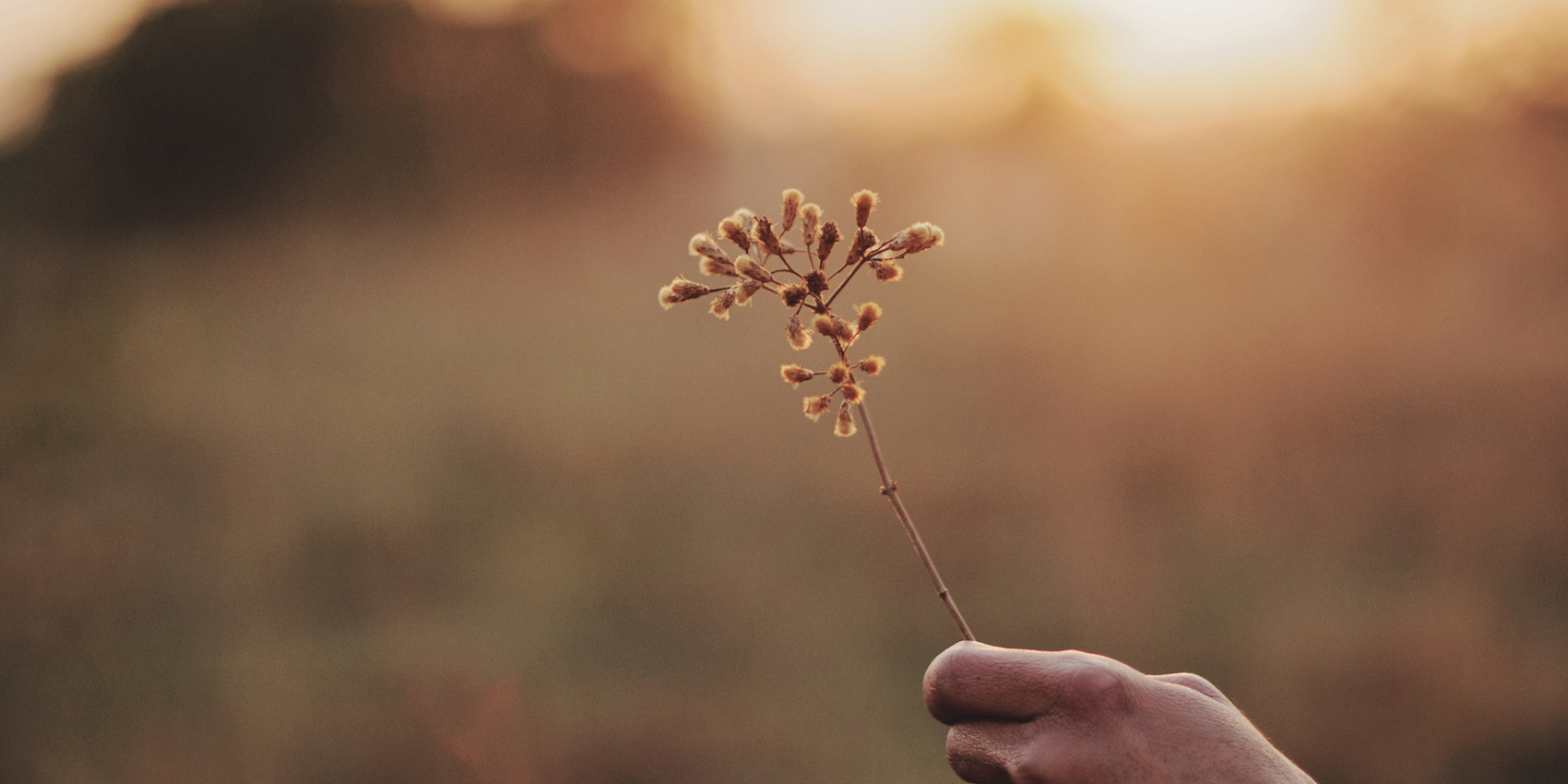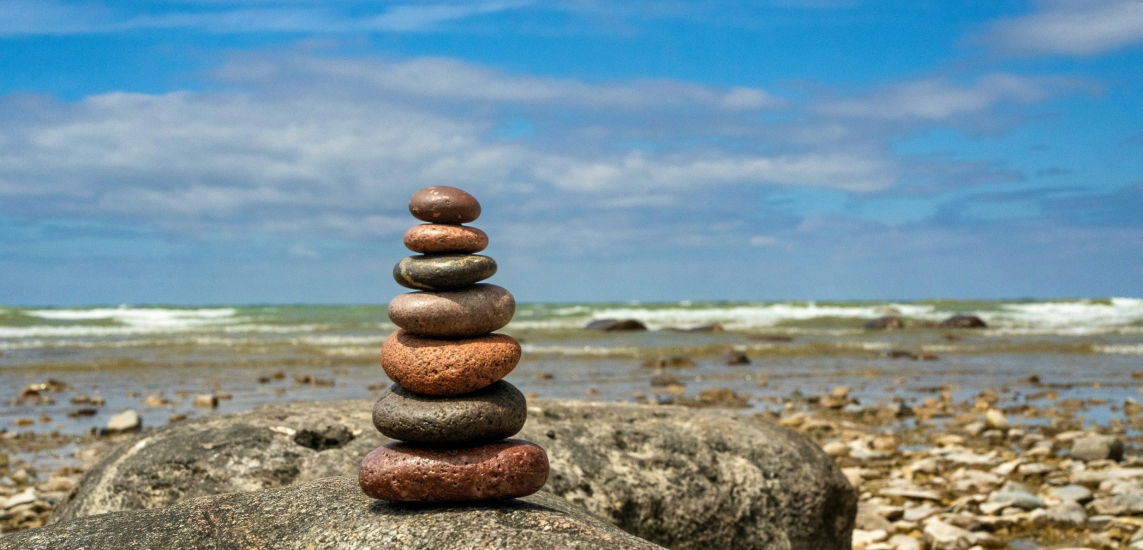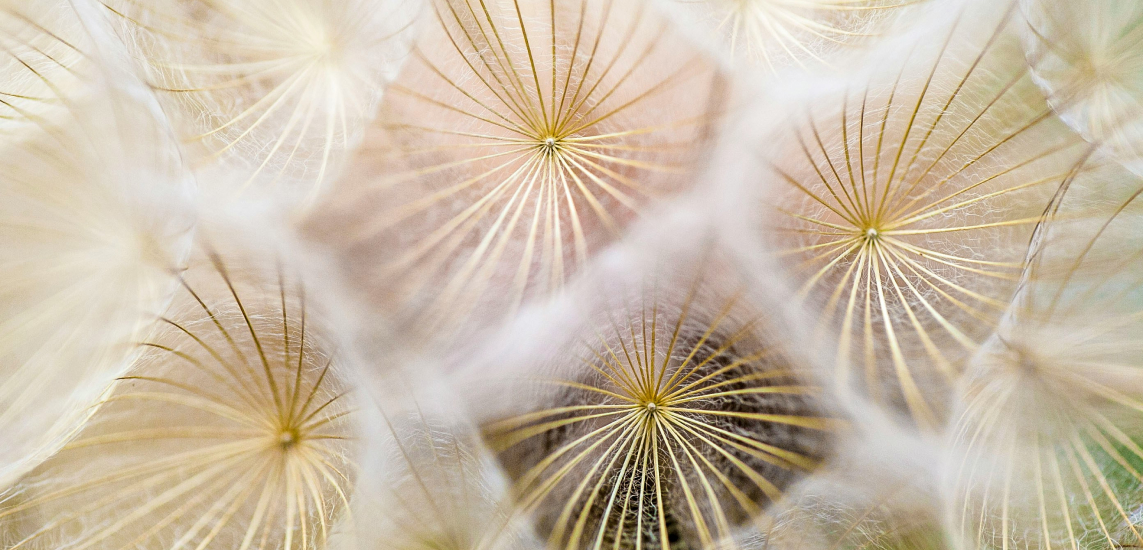This is a transcription of the first talk about radical compassion Tara Brach has given on December 4th, 2019, in Bethesda, MD. This is the first of a three-part talk series. In her talk, Tara guides through two meditative practices which are embedded as audio track for the readers’ immersion. You can listen to the full talk below:
- Radical Compassion - Part 1: Loving Ourselves & Our World Into Healing Tara Brach 55:04
Talk On Radical Compassion By Tara Brach
In the second part, Tara explores how to use RAIN meditation for better relationships. The third article of this series explores the three blockages of the sense of belonging and their antidotes.
I begin with a story of two women whose boys had gone to high school together. About eight years or so after they graduated they ran into each other and were kind of exchanging stories. One volunteered that her son now was with a very preeminent law firm. The other congratulated her and then said, “Well, my son, he is… he is still unemployed but he has begun meditating.” The other woman said, “Well, what is meditating?” She goes, “I don’t know. But at least he is not sitting around doing nothing.”
In this series, we are going to explore how the path of meditation—and in particular the RAIN practice which is the weave of mindfulness and compassion—can really awaken our heart and spirit. Whether you are new or familiar with the practice of RAIN, this is a way to really deepen the way of working with difficulties and challenges that can really free us up.
The primary themes are the grounds of my book “Radical Compassion”. I’ll be referring back to the book and to some of the stories in the book.
More than any feedback that I’ve received over the decades about this path and practices, the message I get the most often is that “RAIN has saved my life” which is a pretty intense statement. When I say RAIN, it’s the practices that weave mindfulness and heartfulness because we need them both. That weave really can free us. We’ll explore how we bring the practice to the emotional tangles inside us, how we bring them to tangles in relationships and how they can serve the healing of our world. That message from people was what motivated me to write “Radical Compassion” which is basically a guidebook in using RAIN, it’s really how do you do it.
The Story Of The Covered Golden Buddha
I’d like to start with a core teaching a lot of the book is based on. In the mid seventeen-hundreds, in Siam—which is now Thailand—they were being invaded by the Burmese. The monks in one monastery had a beautiful, huge pure gold statue of the Buddha and they were fearful it’d be looted by the invading Burmese. So, they did a real tricky thing: they covered it with plaster and clay so it looked like this kind of ordinary, old statue. And as happens, the Burmese did sweep through, every monk was killed, but the statue remained intact. For over two centuries it remained intact. It was so big they couldn’t fit it in a temple, so it was put under a tin roof somewhere. It wasn’t given a great, glorious temple until, a couple of hundred years later, they did build a very large temple. When they were moving the statue a rope broke and the statue fell and some of the covering cracked open and lo and behold they saw the gold and historians realized what had happened.
Here is what this story has me reflecting on regularly; I find it so powerful to consider that the gold is our spirit, the gold is that awareness and love that really is living through all of us. It’s quite natural that we all take on protective coverings—I mean, another word for it is “ego coverings.” We all have to as a way of navigating a difficult world. The suffering comes because we get identified with those coverings—our strategies to protect and further ourselves—and we forget the gold. That’s the suffering. In Buddhist psychology, it’s basically described as “ignorance,” ignoring the truth, the gold, the true nature that’s here. When we forget the gold, our lives get very caught in always trying to further ourselves, our thought patterns all center around the protagonist “Moi” and it’s filled with a lot of anxiety and it’s filled with a lot of loneliness.
From “I” To “We”
So, the spiritual path—one way of really understanding it—is discovering the gold, that we’re all learning to start to trust that awareness and heart that’s right here and see it in each other. You can see this expressed in a kind of the most simple way, as a movement from a felt sense of separateness—where all of our thoughts and feelings lead us to feel like we’re kind of in our own enclosed contracted bubble and the world is out there—to a sense of belonging—that we really belong to each other.
Hindu yogi Swami Satyananda at one point was asked “What’s the nature of true healing?” And he wrote two words on a board, one was “illness” and the other was “wellness”. He circled the I of “illness” and the We of “wellness.” True healing is the movement from the “I”-sense to a sense of this field, that you can actually feel your way into when you start relaxing. This shift from “I” to “we” is the trajectory of evolution also.
Our Conditioning
So as it goes, for millions of years, for primates and early humans, there was internally collaboration, there was internally care, there were genes for cooperation within the bands, pro-social behavior, in other words the wiring for empathy and compassion. But then, between bands, there was aggression, all the wiring for fight-flight-freeze, for seeing an other that looked different and immediately having everything in our body register as “dangerous,” “bad,” “watch out,” “flee or fight.” That’s what we inherited. It was only ten-thousand years ago that the collaborating, caring and cooperation started spreading beyond the small group and beyond kin to wider and wider circles.
So here we are today. And where does that leave us?
What we find out is that we’re witnessing often, when we get disturbed, it’s because we are witnessing the millions of years of conditioning that had us identify the different other as “bad” and be in that fight-flight-freeze. We see it in—I am thinking in the United States in particular—the virulent racism in this country that just shifts forms all the time but has such a grip, that “unreal othering.”
Our trajectory is to wake up from separation. And evolutionary psychologists actually see it as a trajectory. There is more peace in general, over time. I mean, if you look back a few hundred years, there was a lot more bias and reactivity and more going on than even now. So that’s our trajectory.
And then we’re gonna spend more time in our individual lives: What was today like? How much was today coming from the more primitive conditioning of kind of the grasping “I need this for myself” or the anxiety or the defendedness versus a sense of generosity, of “we,” or caring. When we bring it to today, it’s absolutely essential—and I’m gonna keep coming back to this—that we bring tremendous amount of forgiving and acceptance because inevitably we’re gonna see… we each are rigged to have all the stages of evolution play out through us. So each day we’re gonna see how greed or fear arises, defensive, wanting things our own way, insensitive to the needs of others, a shift from any sense of “we” to “I want my way.”
Let’s do a little reflection, okay?
- Radical Compassion Part 1 - Reflection Practice Tara Brach 4:01
If we compare when we’re caught in our kind of more primitive nervous system versus the more awake, evolved, recently evolved nervous system, the key difference we start to notice is this sense of how we are with our inner life, that we’re not at war, we’re at home with ourselves.
Don’t Carry A Gun
There’s a wonderful movie, “Gorillas In The Mist.” Dian Fossey is this field biologist who stars in it and she follows in the footsteps of George Shaler who is a primate biologist whose renown came because he returned from the wilds with more intimate and compelling information about gorillas than any scientist had ever gathered. Now how did he do that?
That’s what’s so interesting about the movie and about her role, too. He didn’t carry a gun when he went into the field. How did he find out more and get intimate with the gorillas? How do we get intimate with ourselves? Not to carry a gun. So previous generations of observers, of field biologists, had entered the territory of these large, wild gorillas with the assumption that they were fearsome or dangerous, the “bad other,” you know, and so they went with these big rifles. The gorillas could actually sense that and feel the danger and fear from these rifle toting guys and they kept a distance. But George Shaler was interested, respectful, really curious and open-hearted towards these amazing creatures and he gathered amazing amount of information. I feel like this captures the essence of the evolutionary attitude that allows us to be in relationship with ourselves and others. It’s “we”… not to carry a gun.
What To Bring Above The Line Of Awareness
This is for each of us today or tomorrow: when we notice the more primitive conditioning coming up, how do we relate to it without judging it?
Carl Jung said,
“Whatever is not brought to consciousness comes to us as fate.”
Now here is the deal: When I meet with people or talk to people on retreat, the ones that are most despairing are the ones that have the fear “I’ll never change.” Does that make sense? “I’m caught in something,” “I’m repeating the patterns,” “I’ll never get close with other people,” “I’ll always end up going back to..,” “pushing people away because I’m grasping”… In other words, the fear of “I’m going to play out the same patterns.” The only way we can break our patterns is if we’re willing to go without a gun and start deepening our attention. And this is where RAIN comes in, this willingness to really deepen our attention to where the tangles are.
In one of his monologues, Jackie Mason is talking to a psychiatrist. His psychiatrist says, “We are here to understand your unconscious.” And Jackie Mason’s response is, “My unconscious is none of my business.”
It’s really this dedication like out of interest that we want to know. And I often describe it in terms of Joseph Campbell’s image of a circle of awareness with a line going through; whatever is outside of our awareness is below the line. That’s why we keep repeating things and making them our destiny, they’re not in consciousness. Either we have a gun or we just haven’t paid attention. Whatever is above the line is in awareness and therefore we’re not identified, we have a choice.
So let’s take a moment and say: Well, what are the key experiences that in general we need to bring above the line so that we can be in loving relationship?
The Trance Of Unworthiness
I think the first is how quickly we turn on ourselves and what I call “the trance of unworthiness.” We know we judge ourselves a lot. But what we’re often not aware of is how pervasive that sense of “not enough” is, how pervasive the sense of falling short is, so that affects everything, it affects every conversation we’re in—in some way we’re monitoring “How am I doing now?”—and there is often a gap between where we think we should be and what we actually are experiencing in ourselves. There is this sense of “not enough” or “not okay.” So, the first thing we bring above the line is we start noticing just how much we are down on ourselves. If we can notice that without adding another judgment of “God, am I a pathological for being so down on myself?” but just say, “Okay, let’s bring that above the line,” because if it’s above the line, we can then work with it to begin to release the pain.
For many people it goes on for decades and decades. A friend of mine was with her mother— she was dying—and the last thing her mother said to her was, “All my life I thought something was wrong with me.” That was the last thing she said. For my friend it was kind of a wake up because it’s such a tragedy to have that sense of “something is wrong with me” keeping us small and tight, caught in the “I,” not being able to feel the “we.”
Now, sometimes it’s really acute. Sometimes it’s a feeling of failure and deficiency that’s very core, a deep sense of shame that just absolutely imprisons us. At other times it’s just a background thing that keeps us from really being relaxed and spontaneous and natural.
One of the stories that points to that from way back was of a woman who went on vacation to New England every summer in a same small town where Paul Newman vacationed. Every Sunday, she’d go for her hike and then she’d go to this bakery that had her favorite ice-cream and get herself a double dip chocolate cone or whatever. She walks in one Sunday. The only patron is Paul Newman. And there he is with his famous baby-blue eyes and he smiles graciously and she responds demurely but inside she is saying, “All right, hold it together, you are a forty-two year old woman, a mother of three, what’s wrong with you, pull yourself together, you are not a teenager, he can tell, just be cool.” She is really getting tight there. And so she goes, she orders her cone, she is trying to do it all smooth and all and she gets the change in one hand and the cone in the other and without direction, she is not even looking at him, she glides out the door. But she gets to her car and she realizes she doesn’t have her cone. “Oh no, what did I do?” So she has to go back in, it’s really embarrassing, and it’s not on the cone rack and it’s not with the clerk. And then she looks over at Paul Newman. And his face breaks into that familiar grin and he said, “You put it in your purse.” So this is one of the more benign versions of the trance of unworthiness. Messy, messy. But benign.
Now, we don’t only get caught in the trance of unworthiness. We also get caught in the trance of superiority which is a kind of a sense of arrogance and inflation and being special. The majority of people in this world think they are more intelligent than other people. So it’s there, too. We kind of often swing from being special and important to being nobody and nothing.
Life Force In Waiting
The point is this that the more wounding we have, the more we’re not given what we needed early on, the more we tighten into “I” and the “I” feels bad about itself. That’s the simplest way. And it’s not just wounding from our family or parents, it’s wounding from our culture because our culture does a really good job at creating tremendous wounding in non-dominant population. The more wounding, the more there’s that defensiveness that has to evolve. We get caught in the coverings because we are trying to protect ourselves.
What does a child most need when it comes into this world? It needs to be seen and understood—“I get you,” mirroring back “You are here, you matter” – and then that what’s seen needs to be loved. These two wings of need, to be understood and loved. When there is no good attachment and those needs are not met, we develop a lot of coverings and get identified with the coverings.
One of the analogies I thought really helpful in nature has to do with spores and what spores do. It’s seen in the plant kingdom: When conditions are really harsh and when what’s needed to bloom can’t be found, there are certain plants that become spores. They dampen down and they kind of wall off their life-force in order to survive. It’s a really effective strategy. They have dug up mummies and have found spores in mummies that have survived for thousands of years that then unfolded into plants when they were given the opportunity of nurture, when they got the right conditions. Isn’t that amazing? You don’t have the right conditions of attachment or nurture so you wall off, there is this frozen life-energy, it can last for thousands of years, and then when you are given the right conditions—because life really wants to live—there is that blossoming. So, when children are chronically judged or not listened to or not understood or worse abused, they form a sort of spore, there is a kind of walling off of the unloved parts of themselves.
It’s a way of surviving, to shut down certain places that can’t keep evolving, they just endure over time but stay frozen, it’s frozen life-energy. But remember, plant spores are opportunists. They are life force in waiting. And so they are kind of scanning for an opportunity.
From Nurturing To Healing
We come on meditation or we start sensing relationships or processes that can start actually, in a healthy way, feeding us. When that happens, when the nurturing is really there, then there is this blooming, this waking up, this healing. Many people describe when they start meditating they start feeling all this energy they didn’t feel before, a lot of creativity—people come on retreats and they want to write books because they have all these books that come up in their mind because there is just all this release of creative energy. Of course, then the idea is to quiet down and write your book a little later, but really settle.
To carry this forward, the evolutionary psychologist Cozolino writes that “It’s not survival of the fittest, it’s survival of the nurtured.” What we need to flourish is mindfulness and compassion, nurturing.
Sri Nisargadatta, who is one of my favorite all-time teachers, writes
“All you need is already within you only you must approach yourself with reverence and love. Self-condemnation and self-distrust are grievace errors. Your constant flight from pain and search for pleasure is a sign of the love you bear for yourself. All I plead with you is this: make love of yourself perfect. Deny yourself nothing. Give yourself infinity and eternity and discover that you do not need them. You are beyond.”
“All I plead with you is this: make love of yourself perfect.” What an amazing invitation! And it doesn’t mean “perfect” as if “Now you have another job to do right,” it means just “Give your heart to it.” And this is the ground-level of the book “Radical Compassion” because it’s only when we really dedicate to loving the life here that we can fully release the frozen life that’s been kind of locked up in there, that we can free our hearts. It’s not just offering ourselves love, it’s also being in relationship. There’s a lot of processes for making that love bring us alive.I often call it “spiritual reparenting” just because what we’re learning to do is to bring the love and bring the attention that we didn’t get to the life that’s here.
So, here is where RAIN comes in.
What Is RAIN?
For those of you that are new to RAIN: the acronym is Recognize, Allow, Investigate and Nurture. And those are the four steps. After we do those four steps there’s what’s called “After the RAIN” which is a time of just being and getting to know the gold.
Here is an example, just very briefly because I’m gonna give you a more full out illustration. Let’s say you’ve got a holiday approaching. And you’re gonna be with family. And there’s certain places that you know you’re gonna get triggered. Let’s say there’s a certain relationship that brings up resentment or anger or anxiety or something. So how to use RAIN?
- You often have to in some way pull away, have a little time out, but you recognize “Okay, I’m triggered and I’m feeling defensive,” okay, “feeling angry, feeling hurt.” That’s the R; you just kind of name what’s happening.
- The A is letting it be there, it’s allowing it. Now, allowing doesn’t mean you like it. Allowing doesn’t mean you embrace it. Allowing just means you’re not pushing it away and you’re not trying to fix it. In some wise way you’re saying, “Okay, this belongs, it’s part of reality, just this moment.” I find the language, “this belongs” really powerful. “Belong” doesn’t mean it’s gonna belong even in five minutes. It just means that, right now, this is reality. So allow it. Don’t fight reality. That’s the A.
- The I—Investigate—means that, since it’s here let’s investigate; and investigate is not mental. “Well, my mother always criticized me so now when my cousin says such and such it feels like criticism…” you know, it’s not that. Investigate is, “Where am I feeling this in my body?” It may be that part of investigating is, “I have a belief that I’m worthless and this person is playing into it” but it’s primarily to feel it in your body—your throat, your chest, your belly—to feel it. That’s Investigate, because you are getting in touch.
- Then Nurture is you sensing: what does this hurt, defended part of me most need in this moment? Maybe it just needs, “Hey, listen, you’re okay, it’s going to be okay”—hand on the heart, you know. Maybe it needs just a little message of “I love you, I am with you, I’m not leaving.” Maybe it needs you to imagine your great-grandparent with their hand on your shoulder. Whatever that part needs you kind of nurture. And then you just get still and sense whatever has shifted. Because if you pause long enough to Recognize, Allow, Investigate and even go through a gesture of Nurturing, something biologically, neurologically, in your brain will shift. It won’t be perfect, you won’t feel necessarily liberated, but there will be more access to your more evolved heart-mind, more access to your intelligence and your compassion and your empathy.
That’s just a brief encapsulation of RAIN. The key is that when we hit a tangle, we have to be willing to be with it.
3 Stories Of RAIN
1. Buddha And Mara
One of the most classic stories from the Buddhist tradition is the Buddha waken through the night under the Bodhi Tree and he had to deal with all the shadow energies which are described in terms of the God Mara—greed, hatred, delusion, shame, anger, whatever—and so Mara would attack through the night and the Buddha kept bringing mindfulness and compassion and when he woke up, all the attacks faded away. But throughout the Buddha’s teaching career, forty years, Mara kept appearing. And the Buddha might be teaching a hundred people gathered in a field and Mara would be lurking around the outskirts and every time the Buddha’s loyal assistant, follower and also his cousin Ananda would get freaked out seeing Mara and he’d go, “Oh no! Mara is here, what are we going to do?” But the Buddha’s response was different. Remember: this is Recognize and Allow; he’d say, “Oh okay, Mara is here.” “I see you Mara. Come, let’s have tea.” That was his response. And that’s what we are learning to do with all the activated energies that come up when we are caught, when we are reactive, when we are identified with the coverings. “Okay, I see you Mara. Let’s have tea.” That brings it above the line.
2. The Woman Who Felt Unloveable
Here is an example of a woman that was very, very caught and how she worked with this.
This was a woman who was in recovery from alcoholism. And had huge guilt about the way she injured her teenage daughter who herself was now struggling with anxiety, depression and an eating disorder. And also a lot of guilt around a strain on her marriage. But in addition to guilt she was angry and judgmental at others for making her feel bad about herself. So it was a whole mix. When we worked together any appearance of her harsh inner critic was kind of the signal to do RAIN.
The first step for her whenever she’d start hearing that voice telling her how she was an absolute failure was to recognize it—and she would often recognize that she was feeling anger and guilt.
The Allowing for her was if she could just breathe with it and say, “Okay, I’m staying, this belongs, just breathe with it.”
For her investigating she’d start feeling in her body that “bad self”-feeling, the fear and the shame, and for her it had a kind of hollow, aching, sinking feeling in her body. And I asked her how long she had been feeling this. And she said, “I’ve been feeling this for as long as I can remember.” And then she said, “It’s unlovable. I’m unlovable. I am never enough.” That was when she was really investigating how stuck she was. I said, “Well, what’s it like to witness that you have for your whole life been feeling unlovable and these feelings?” And she began weeping because for her that was the moment—and I think of this as “the ouch moment”—it was like a soul sadness where she realized how her whole life had been in grip of the trance of unworthiness. Her whole life she had been feeling “Something is wrong with me.” And how many moments were stolen, how it drove her to alcoholism. These are later recognitions.
The last question in Investigating that I asked, “What does this young, unlovable place most need?” And it was clear that it needed to be held and nurtured. She crossed both arms, hands on the shoulders, and basically said, “I am here, I am not leaving, I love you.” And then she told me, “This was hard to do by myself.” And so I said, “Who could help you?” And she said, “My grandmother.” So, it was like her grandmother was holding her, holding her young self. That was the way it worked for her to nurture. And she sat there like that rocking and nurturing herself with the sense of her grandmother there for a number of minutes.
After the RAIN she said, “I’m just feeling a little more space, a little more peace.” And that was about it. It was like this shift from the covering, from being caught in that self that felt so unworthy and guilty and angry to this space that was more peaceful and that could just be holding her inner life. She had to do it many rounds, many, many rounds. But she described the voice of judgment would come up and the big difference was much more quickly she said, “I don’t have to believe it.”
I want to just pause here and say to you that one of the gifts of RAIN is that you stop having to believe the old things that you believed automatically. It’s one of the gifts: you don’t have to believe your thoughts.
So for her, it was that she didn’t have to believe it. And she had many, many rounds of these thoughts coming up and she’d recognize it and allow it and investigate and go like this and realize that who she was was not the story that she was telling herself
Some months later—because she had a real stand-off with her daughter, they were not close at all, and she always felt guilty and her daughter was kind of angry and so on—her daughter was upset about something and she put her arm around her. Her daughter would always stiffen and pull away, but she didn’t. Her daughter actually leaned in and collapsed into her and started sobbing. And she told me that through RAIN her heart-space was able to start holding herself so she could hold her daughter in a new way. And I was so touched by that because this is the difference of being caught in the “I” that doesn’t like itself and moving to the belonging of the “we.” More heart-space.
The key in being able to move from the covering to feeling the gold is what I often call a “U-turn.” And I talk about this a lot in “Radical Compassion”. If we want to break out of the patterns and not have them become our destiny we have to pause and move from reacting to something out there to making a U-turn and bringing attention to the life that’s here. And RAIN is a very easy-to-remember tool. And it totally affects how we then respond to our world.
Read more: The “U-turn” is a core principle in Tara Brach’s article about how to let go of anger with mindfulness. Explore more!
3. The Army Lieutenant
One last short story that I shared over the years because it stayed with me so powerfully about the U-turn is one of an Army lieutenant that had to do anger management training. And built into his course was mindfulness, how to bring attention to what’s going on inside you for anger management. One evening he went to a supermarket and he fills up his cart, he gets into line, the woman in front of him only has one item but she is not in the express line, she is in his line, and not only that, she and the clerk start talking and playing with the child and so on. And his anger flares up, so he is in the covering now of the golden Buddha, he is completely caught and identified with his anger, this is the primitive mind going, and, you know, “I’m a busy person and they’re just hanging out and talking and I’ve got things to do and places to go…” and he is kind of getting the whole head of steam. And he goes, “Oh yeah, mindfulness” and he does the U-turn, “Okay, recognizing, okay, what’s going on? Angry, angry. Okay, let it be there. Deepening attention. Investigating: okay, there is a clutch. Okay, that fear of my life falling apart if I don’t get everything done” – you know that one – “kind attention, just be with it, kind, kind.” Then he looks and sees the little girl and notices that she is really kind of cute.
So finally, the woman and the child leave, it’s his turn, and he says to the clerk, “You know that little girl was adorable.” Clerk beams. She says “Oh that’s my little girl. Actually my husband was killed last year in Afghanistan and my mom brings my baby over twice a day so we’ve a little time to be together.”
For this man just to imagine that he could have carried on being angry and never have seen a deeper reality both in himself and in the world. And it’s not like everybody we meet has had that major drama but, you know, everyone we meet is struggling hard. And what if we could move through our day and pause enough and make that U-turn kind of come back to our own heart and presence so that when we run into others we see past the plaster clay covering and we see who is there and we respond to our world.
Practicing RAIN
With that in mind we’ll just take a few moments now. We’ll do a brief practice of RAIN and I’d like to invite you to take a longer time if you haven’t been doing this to explore it for yourself.
- Radical Compassion Part 1 - Guided RAIN Practice Tara Brach 7:09







